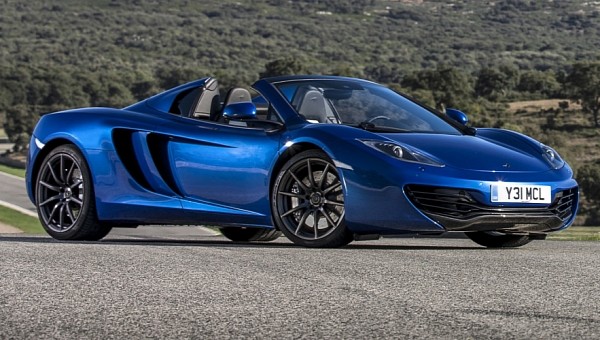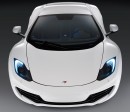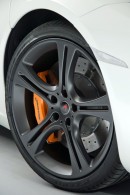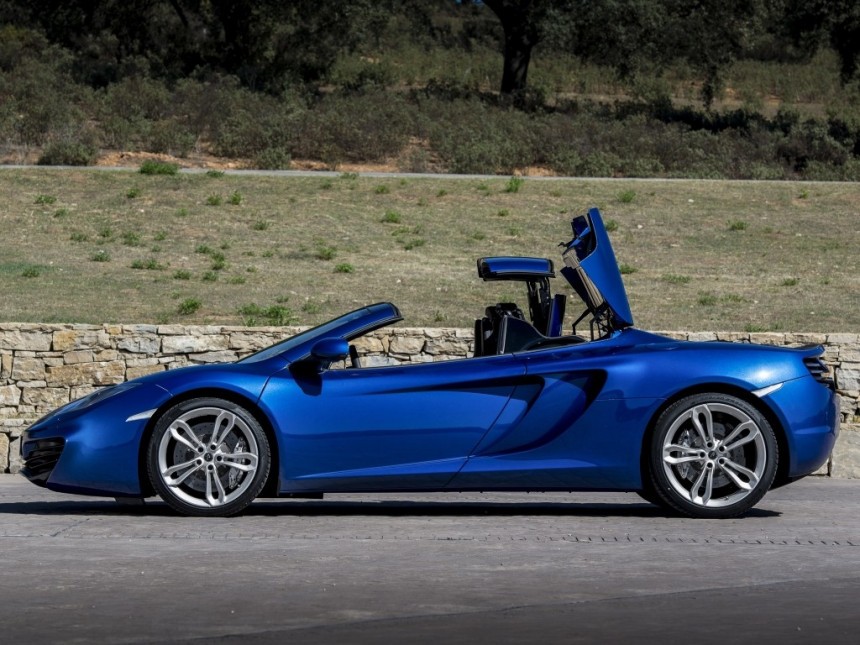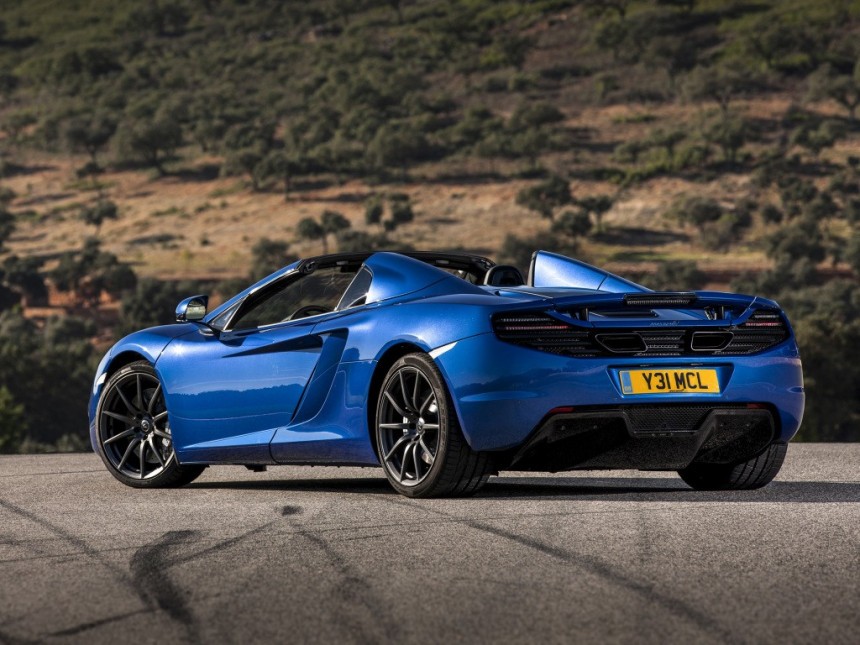McLaren Cars gave us the F1 at the beginning of the ‘90s. After production came to a grinding halt, the company laid in limbo until Mercedes-Benz tasked the Brits with developing and making the SLR McLaren. The Woking-based outfit was refashioned as McLaren Automotive two years after the British automaker hired Frank Stephenson as design director.
In retrospect, they couldn’t have found a better man for the job. The Moroccan-born American designer started his professional career at Ford of Europe in Germany. He is credited with the infamous rear spoiler of the Sierra RS Cosworth. Had FoMoCo been more adventurous, said spoiler would have been a triple-decker inspired by the Red Baron’s plane.
Thereafter Frank moved to BMW, where his most notable projects were the first-generation X5 and first-generation MINI Hatch. After the turn of the century, he would use his talent for incredible-looking machines from the Prancing Horse of Maranello and the House of the Trident. Following a stint at Fiat, he would arrive at McLaren Automotive before it was known as such, where the first order of business was to design the MP4-12C.
Some might be tempted to describe the MP4-12C as being a little insipid in terms of styling, but it’s anything but that. Frank designed McLaren Automotive’s first series-production car as a four-wheeled canvas that would serve as the basis for everything from the plug-in hybrid P1 all the way to the now-discontinued 720S. The MP4-12C is neither tame nor wild in the way it looks. Although it may not inspire the same emotions a Ferrari 458 Italia does, it’s a purposeful design that aged remarkably well.
Before going any further, why did McLaren Automotive use a name that better suits a fax machine? Ron Dennis holds a part of the blame for it. MP4 comes from McLaren Project 4, the organization resulting from Ron Dennis’ Project 4 merger with McLaren. MP4 further harks back to the chassis designation of McLaren’s Formula 1 cars. 12 references the internal vehicle performance index and the MP4/12 that competed in the 1997 season of the Formula 1 World Championship, whereas C simply means carbon.
McLaren is remembered for many things in Formula 1, including the first full carbon composite monocoque. The lessons learned from the MP4/1 were applied to the F1 road car, which employs a CFRP monocoque. For the MP4-12C, which is now referred to as 12C, the British automaker went one step further by designing a single piece carbon-fiber monocoque. Lovingly dubbed MonoCell, the lightweight chassis tips the scales at merely 80 kilograms (176 pounds). Manufactured by Carbo Tech in Austria, the MonoCell is joined by aluminum subframes at both ends of the car.
Equipped with 19- and 20-inch wheels, the 12C rocks a very different engine from the naturally-aspirated V12 of the F1. Codenamed M838T, the force-fed V8 was developed in collaboration with Ricardo based on the Nissan VRH racing engine architecture. A 90-degree lump with a flat-plane crankshaft, the M838T is joined by two Mitsubishi Heavy Industries turbochargers. Running an 8.7:1 compression ratio, it produces 592 horsepower (600 ps) at 7,000 revolutions per minute and 443 pound-feet (600 Nm) of torque between 3,000 and 6,500 revolutions per minute.
In October 2012 for the 2013 model year, the 12C received a more aggressive remap that would improve both power and torque. 616 horsepower (625 ps) at 7,500 revolutions per minute and the same kind of torque, that is, although peak torque was delivered from 3,000 to 7,000 compared to 6,500 revolutions per minute for the original specification.
The 2013 model year also saw the addition of the Spider, first shown in August 2012 at the Pebble Beach Concours d’Elegance. Regardless of specification, the 12C featured a dual-clutch transmission supplied by Graziano. Dubbed Seamless Shift Gearbox, said tranny integrates a clever function that primes the transmission for the next shift, resulting in a faster shift. Formula 1-style brake steer also needs to be mentioned. As implied, the inside rear wheel is braked during cornering to reduce understeer.
Revealed in March 2012, the 12C HS is a special edition limited to 10 units. The Crown Prince of Bahrain and McLaren executive chairman Ron Dennis are two known owners of the 12C HS, which was already spoken for at launch. The High Sport is easy to distinguish from the standard specification by means of cooler wheels, more aero trickery, and a bit more power.
The High Sport can thank the MP4-12C GT3 racing program for most of the upgrades over the standard 12C. The first car to compete in sportscar racing for McLaren since the F1 GTR made its debut at the Spa Francorchamps round of the 2011 British GT Championship. The MP4-12C GT3 would also race in the FIA GT1 World Championship. Despite its go-faster looks and motorsport-spec transmission, the GT3 isn’t as powerful as the road car due to homologation. It makes 493 horsepower (500 ps).
Arguably the most exotic member of the 12C family is the X-1, a one-off piece of automotive artwork inspired by the likes of the Citroen SM, Buick Electra, Mercedes-Benz 540K, Facel Vega, and Chrysler D’Elegance Ghia. According to McLaren Special Operations program director Paul MacKenzie, no fewer than three years were spent developing the car. A very influential Bahraini gentleman commissioned the otherworldly X-1.
Produced exclusively in Woking at the McLaren Production Centre, the 12C needs 7 minutes and 28 seconds to complete a lap of the Nurburgring. Offered between 2011 and 2014, the 12C would also be available as a 50th Anniversary Edition. A little over 3,400 examples of the motorsport-infused supercar were assembled during this period, with the fixed-head coupe outselling the open-top sibling by approximately 60 to 40 percent.
Thereafter Frank moved to BMW, where his most notable projects were the first-generation X5 and first-generation MINI Hatch. After the turn of the century, he would use his talent for incredible-looking machines from the Prancing Horse of Maranello and the House of the Trident. Following a stint at Fiat, he would arrive at McLaren Automotive before it was known as such, where the first order of business was to design the MP4-12C.
Some might be tempted to describe the MP4-12C as being a little insipid in terms of styling, but it’s anything but that. Frank designed McLaren Automotive’s first series-production car as a four-wheeled canvas that would serve as the basis for everything from the plug-in hybrid P1 all the way to the now-discontinued 720S. The MP4-12C is neither tame nor wild in the way it looks. Although it may not inspire the same emotions a Ferrari 458 Italia does, it’s a purposeful design that aged remarkably well.
Before going any further, why did McLaren Automotive use a name that better suits a fax machine? Ron Dennis holds a part of the blame for it. MP4 comes from McLaren Project 4, the organization resulting from Ron Dennis’ Project 4 merger with McLaren. MP4 further harks back to the chassis designation of McLaren’s Formula 1 cars. 12 references the internal vehicle performance index and the MP4/12 that competed in the 1997 season of the Formula 1 World Championship, whereas C simply means carbon.
Equipped with 19- and 20-inch wheels, the 12C rocks a very different engine from the naturally-aspirated V12 of the F1. Codenamed M838T, the force-fed V8 was developed in collaboration with Ricardo based on the Nissan VRH racing engine architecture. A 90-degree lump with a flat-plane crankshaft, the M838T is joined by two Mitsubishi Heavy Industries turbochargers. Running an 8.7:1 compression ratio, it produces 592 horsepower (600 ps) at 7,000 revolutions per minute and 443 pound-feet (600 Nm) of torque between 3,000 and 6,500 revolutions per minute.
In October 2012 for the 2013 model year, the 12C received a more aggressive remap that would improve both power and torque. 616 horsepower (625 ps) at 7,500 revolutions per minute and the same kind of torque, that is, although peak torque was delivered from 3,000 to 7,000 compared to 6,500 revolutions per minute for the original specification.
The 2013 model year also saw the addition of the Spider, first shown in August 2012 at the Pebble Beach Concours d’Elegance. Regardless of specification, the 12C featured a dual-clutch transmission supplied by Graziano. Dubbed Seamless Shift Gearbox, said tranny integrates a clever function that primes the transmission for the next shift, resulting in a faster shift. Formula 1-style brake steer also needs to be mentioned. As implied, the inside rear wheel is braked during cornering to reduce understeer.
The High Sport can thank the MP4-12C GT3 racing program for most of the upgrades over the standard 12C. The first car to compete in sportscar racing for McLaren since the F1 GTR made its debut at the Spa Francorchamps round of the 2011 British GT Championship. The MP4-12C GT3 would also race in the FIA GT1 World Championship. Despite its go-faster looks and motorsport-spec transmission, the GT3 isn’t as powerful as the road car due to homologation. It makes 493 horsepower (500 ps).
Arguably the most exotic member of the 12C family is the X-1, a one-off piece of automotive artwork inspired by the likes of the Citroen SM, Buick Electra, Mercedes-Benz 540K, Facel Vega, and Chrysler D’Elegance Ghia. According to McLaren Special Operations program director Paul MacKenzie, no fewer than three years were spent developing the car. A very influential Bahraini gentleman commissioned the otherworldly X-1.
Produced exclusively in Woking at the McLaren Production Centre, the 12C needs 7 minutes and 28 seconds to complete a lap of the Nurburgring. Offered between 2011 and 2014, the 12C would also be available as a 50th Anniversary Edition. A little over 3,400 examples of the motorsport-infused supercar were assembled during this period, with the fixed-head coupe outselling the open-top sibling by approximately 60 to 40 percent.
